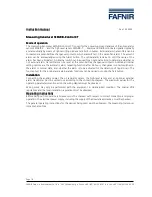
5
6.2 Rear Panel
USB/SERVICE
LAN
RS-232
IN
IR
HDMI
OUT
IN
OUT
SFP+
DP IN
IN
OUT
DC 12V
AUDIO
TX RX
1
2
3
4
5
6
7
8
9
10
1
HDMI OUT Port:
Connect to an HDMI TV, monitor, or amplifier for
digital video and audio output.
2
HDMI IN Port:
Connect to HDMI source equipment such as a media
player, game console, or set-top box.
3
DP IN Port:
Connect to DisplayPort source equipment such as a PC or
laptop.
4
SFP+ Port:
Insert a standard SFP+ module, and connect the
appropriate optical cable to allow data transmission to a compatible
transceiver.
Note: The SFP+ module must support a dual-optical fiber connection
style, such as LC, or be pre-terminated dual-optical fiber cables.
Single-mode and multi-mode support is dependent on the SFP+ modules
used.
5
AUDIO PORTS:
OUT Port:
Connect to powered speakers or an amplifier for stereo
analogue audio output.
IN Port:
Connect to the stereo analogue output of a device such as a
CD player or PC.
Note: Audio is routed directly from the IN Port to the opposite transceiver’s
OUT Port.
6
IR PORTS:
OUT Port:
Connect to an IR Blaster to broadcast IR signals from a
connected transceiver to devices within direct line-of sight of the IR
Blaster.
IN Port:
Connect to an IR Extender to receive IR control signals and
extend them to devices connected to a connected transceiver. Ensure
that the remote being used is within direct line-of-sight of the IR
Extender.
Note: Currently, only 38KHz IR signal extension is supported.
7
RS-232 Terminal Block:
Connect directly to a PC, laptop or serial
controllable device with a 3-pin adapter cable to extend the RS-232
signal between transceivers.











































